Up until last decade ago, “no one” went to Ethiopia. This has changed, thanks to an easy-to-get eVisa, the rise of Ethiopian Airlines, and a unique range of natural wonders and ancient rock churches. Ethiopia now gets about one million international tourists per year, except when a global pandemic is going on.
On my way home from South Africa, I took advantage of an offer that gave me a free hotel room and a full day to explore Addis Ababa, Ethiopia’s capital. This post will show you what I saw during a 15 hour layover. At the end of this post, I’ll tell you how to get in on this deal.
The cover photo shows the brutalist concrete Lion of Judah Monument, created by Maurice Calka in the 1950s. A lot of confusing history goes into it, involving the Rastafarian messiah and controversial emperor of Ethiopia, Haile Selassie. The statue is now an icon of Addis Ababa. Typical for most tourist highlights in this city, it is large and not visually pleasing, yet fascinating.
Let’s begin at our accommodation for the day; Soramba Hotel. We do not choose it, the airline just send us here to wait for our connecting flight. We can sleep the hours away in comfort, or we can go out and explore.
The room is nice and clean, the food is … okay, and the location is fine. We’re in the Piazza district, within walking distance of many points of interest. Outside the hotel is your average chaotic major African city, although it does look a tad richer than most capitals in this part of the world.
The view from our room consists mainly of power lines, but what we can glimpse through them looks safe enough to encourage us to go for a walk. I feel lucky, so I even bring my camera, loaded with a fresh memory card. I’m only one day away from going home, anyway.
We exchange a few euros into the local currency, birr. Instead of recognizable money, we are given a few orange, sticky pieces of bacteria, carefully stringed together by paper-like molecules.
It’ll have to do. If I’m mugged, I won’t even be sorry. And I will clean my hands thoroughly after having handed over my lethal money.
Ethiopia has a proud history. Except for one tiny decade ruled from Italy, ending after World War II, they were never a colony run by Europeans. Ironically, this is commemorated by a European style golden-ish “Emperor on horseback” statue, in the Emperor Menelik II square, at the center of the Piazza district.
Thanks to it’s location in the highlands, almost two and a half thousand meters above sea level, the temperature in Addis Abeba is surprisingly comfortable. We’re still close to the Equator, so it’s hot enough to turn most people off walking. Therefore, a myriad of minibuses clog up the city streets. The public transportation is relatively well organized, with pick-up points where people get on and off the many vehicles.
We don’t really know where we want to go, so we just randomly walk down a street instead of playing the minibus lottery. We do sit down to watch the queue for a while, though. The way people dress here is a curious mix of African, European and Middle Eastern fashion.
A snapshot from where Mahatma Gandhi Street meets Cunningham Street. An old guy in a white trenchcoat and a smart hat drags 50 brightly colored plastic cans across the busy road. No one lifts an eyebrow.
No plastic was hurt during the making of this photo.
The Volkswagen Beetle is the world’s best selling car of all time, manufactured between 1938 and 2003. Almost 20 years after the last new Beetle was made, these vehicles are still plentiful in Addis Ababa, often pimped beyond recognition.
You’ll have trouble finding a car without multiple dents in Addis Ababa, Beetle or not, but people here generally take extremely good care of their Beetles.
The streets are lined with proper shops. Some places you find people selling stuff off sheets on the sidewalk, but there’s surprisingly little of that.
What Addis Ababa does have just as much of as expected, are men sitting around with little to do, under the pretense of doing some kind of job. They’re all happy to attempt answering our questions about where we should go, as we get increasingly lost in this metropolis. Their general suggestion seems to be that we should go back the way we came. We ignore this advice, of course. Every street offers another bag of surprises. We want more of that.
On Churchill Avenue I have to pinch myself. Across the street I see something strangely familiar.
Whatever this is, it just has to be made in North Korea.
It turns out to be the Derg Monument, also known as the Tiglachin (“Our Struggle”) monument, commemorating the Ogaden War, when Cuban soldiers came here and “helped” Ethiopia, in the name of Communism. Thanks to the Cuban help, Somalia was sent spiraling into civil war and the present day catastrophic conditions in that country. It’s sort of comforting that this monument is in pretty bad shape as well.
A soldier guarding the monument will not let me bring my camera anywhere near it. So here’s a zoom from the other side of the street.
African faces aside, it’s strikingly similar to things you can see in Pyongyang. Later I verify that it actually is a product of the Mansudae Art Studio in that very city.
At first glance, the city appears relatively modern and orderly, but often the illusion breaks.
For instance, we frequently see people riding on the roof of cars, sometimes accompanied by sheep and goats.
Standing out from the many shops selling cheap Made in China necessities, there are boutiques that sell products that you just wouldn’t expect there being much of a market for in East Africa.
But there must be one. And I would not be surprised if this mostly having to do with Addis Ababa being home to the headquarters of the African Union. There must be a literally awful lot of corrupt rich diplomats with stylish homes here.
Wherever we go, we’re surrounded by vivid colors.
Usually not painted very evenly, or recently, but definitely painted. Those who live in Addis Ababa are people of color, to the fullest extent.
We’re also continuously surrounded by an orderly chaos.
Goods are dropped off. Garbage is collected. Old men walk around in elegant clothes that must be at least 30 years old. Children run by on their way to school, wearing spotless uniforms. Minibus drivers yell out names of the places they’re heading for, not willing to leave until their vehicle is filled sufficiently beyond capacity.
It’s a beautiful mess.
Watching people is a particularly fun activity in Addis Ababa. I especially love the wide range of headwear we encounter.
This fruit salesman knows that hygiene is important when selling edibles. There will be no stray hair on his bananas.
We’re in the middle of a metropolis, but if there’s green grass around, there will be goats.
While the risk of lions here is relatively low, there are plenty of other ways a goat could disappear. This shepherd seems happy with his career choice, allowing him to stop and talk to people all the time.
Skyscrapers doesn’t seem necessary in Ethiopia, but of course the Chinese have arrived in this part of Africa as well, and brought their mega structures with them.
This may or may not eventually become the Commercial Bank of Ethiopia Headquarters. They started building in 2015, and ran out of money 46 floors later. It’s too big to just leave standing there like this. But for now it’s the largest skeleton signalling a city that is growing at a fast pace.
Fun fact about high-rise buildings in Addis Ababa: The most expensive apartments are found at ground level, and they get cheaper the higher up you go. Frequent power cuts means that the elevator service is unreliable. If you’re a rich Ethiopian, you’ve already climbed all the stairs you intend to in this life.
We’re not on a safari, but we do see some animals. Most of them are cats.
While not of certified Abyssinian breed, the street cats in Addis Ababa live in the middle of what used to be Abyssinia, so you don’t get cats more Abyssinian than this. They’re very similar to how the ancient Egyptians depicted their cat gods. That’s no coincidence. This is probably close to what the cats of the pharaohs looked like.
The most popular and reliable geocache in Addis Ababa is guarded by the sweet Mesy, the owner of a small stall where you can try Ethiopian coffee just the way it should be enjoyed.
She is extremely worried on my behalf, seeing me carry a camera and a GPS in plain view, but she is mainly thrilled to see another geocacher. Do visit her if you’re ever in the area.
Please ignore the almost invisible sweat rings.
The street fashion of Addis Ababa is anything but boring.
Some streets are rougher than others.
And if that sign is to be believed, I suppose we didn’t end up in the seediest hotel in Addis Ababa at all.
We round off our day with a visit to the Saint Gibi Gebriel church. Ethiopia is most famous for churches carved out of bedrock, but we unfortunately do not have time to seek them out today. Ethiopia does have some rather unique wooden churches as well, and the Saint Gabriel Church is a good example of this. It’s a parade of bright colors and colonial style wrought iron details.
Ethiopia became a Christian country in the early fourth century. More or less completely surrounded by Islam, they have had a long time to evolve independently from Christian culture and architecture elsewhere.
These two charming locals come up to us at the church and demand to know our name and nationality. If you’re the kind of tourist that enjoy being the main attraction when you travel, Ethiopia can be just your thing. Outside the main sights, people see few foreigners here. So when they have the chance, they are likely to want to interact with you. It can be quite entertaining, and in some cases a humbling and/or eye-opening experience.
With that, our day is over. Just as the sun sets, we head back. First to the hotel for a quick rest, and then on to the airport.
It’s been a busy day, but well worth the effort. And to be given the opportunity to explore a city for a full day basically for free, that’s something no one should pass on.
Be warned, though. Having done this, there’s a huge risk you’ll just have to return to Ethiopia for a longer and considerably more expensive visit sometime later.
I know I will.
How to see Addis Ababa for free
Ethiopian Airlines is likely the best airline in Africa. Among the many good things they do, they offer a free hotel room and transit visa for many of their passengers with connecting flights through Addis Ababa.
Here’s how it works.
First, you must have a passport that qualifies you for getting a visa on arrival. Citizens of most countries do, but you should verify that it applies to you.
Secondly, you must have two connecting flights through Addis Ababa, and both of your flights must be operated by Ethiopian Airlines. Between the two flights there must be not less than 8 hours and not more than 24 hours.
Thirdly, and this is where it gets complicated; in the period where you wait between your flights, there can be no other flights with Ethiopian Airlines that you could have taken to reduce your waiting time.
I will use my own flights as an example of when the offer is valid, and when it isn’t:
I could not find a way to use this offer when flying from Oslo, Norway to Johannesburg, South Africa. That is because Ethiopian Airlines offer several flights every day from Addis Ababa to Johannesburg. So when my plane from Oslo lands in Addis Ababa, the next possible flight to Johannesburg will always leave in much less than eight hours.
Traveling the other way, however, it’s easy to find a way to get the offer. Ethiopian Airlines has only one flight per day to Oslo, and it leaves late in the evening. So by taking an overnight flight from Johannesburg to Addis Ababa on my way home, I arrive very early in the morning in Addis Ababa, and my next possible flight option to Oslo gives me about 15 hours of waiting time in Ethiopia. And I get all the hours of daylight in the city. It’s perfect!
If I had been exhausted, I could have spent those hours sleeping in the hotel room and eating for free in the hotel restaurant. Fortunately, it is not required that you actually sleep in the hotel the airline arranges for you. So after checking in and refreshing yourself, you can go out and explore the city as much as you like throughout the day.
Transportation between the airport and your hotel, both ways, is also included in the offer.
Because the system is a little bit strange/basic, here’s how it works:
When you check in to your flight with Ethiopian, and you do qualify for the free layover, you should be given a voucher along with your boarding pass. If you don’t get one, your flights probably do not qualify for the voucher, but it doesn’t hurt to politely ask if they’ve forgotten to attach a voucher.
If you have scored a voucher, take it to Ethiopian Airlines’ transit office at the airport in Addis Ababa as soon as you arrive. The person working there will take your piece of paper and give you a hotel voucher and a small yellow piece of paper (a transit visa card).
Use these documents to get through immigration. Just show them to the immigration officer, and you’ll be admitted into the country for 24 hours.
Now you must wait for your transport to the hotel. Find the Ethiopian Airlines representative that is on duty just before you leave the transit area and enter the public part of the airport. Sit in this hall and wait until the representative comes over and tells you your bus or taxi is here.
You’ll be told where to go. Bole International Airport isn’t large, so you’ll easily find your way. The drive should not take more than half an hour.
When you arrive at the hotel, show them your hotel voucher, and they’ll give you your room key and meal vouchers. The number of meals you get depend on how long you’re there for. If you’re there for the whole day, they’ll give you both breakfast, lunch and dinner.
You can usually exchange money at the hotel reception. Do not get more Ethiopian money than you realistically need. Maybe just enough for a meal and public transportation, which both can be really, really cheap in Addis Ababa. It’s unlikely that you’ll find any souvenirs you want and should bring home.
Your receptionist is likely to be very interested in arranging a driver or a tour for the day for you, but there’s really no need for that. If you still want it, be ready to bargain for the price, as they may well start out high. And despite what they may say, if you’re even just a tiny bit street savvy, you’ll be safe walking around in Addis Ababa on your own.
A couple of hours before your next flight leaves, you will be picked up at the hotel and taken to the airport. You can ask for an earlier pick-up time if you want to. After sunset there’s little reason for staying in the city center anyway. Unless you want to sleep, of course. Just do not oversleep and miss your flight!
Keep in mind that you will not have access to your checked luggage during your lay-over, so make sure you have everything you need for the day in your carry-on luggage.
That is all. This may look like a bit complicated, but it’s actually an easy procedure. And even if you’re a bit tired from your first flight, do try and get out and see some of this highly interesting city! You will not regret it.
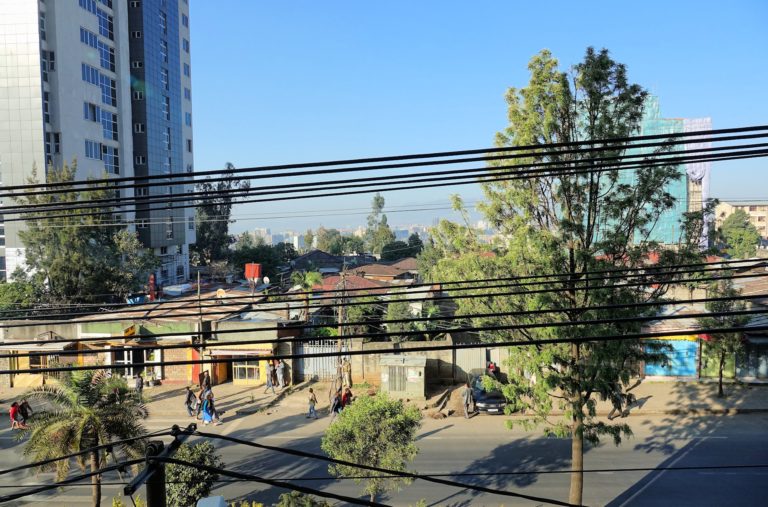
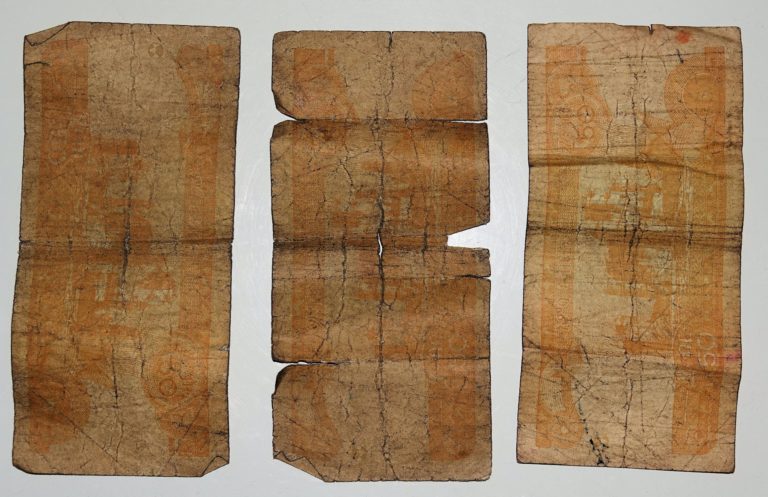
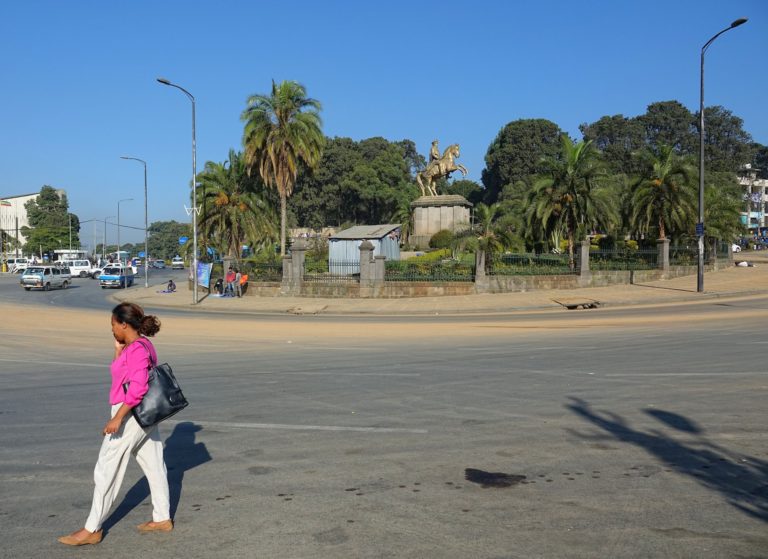


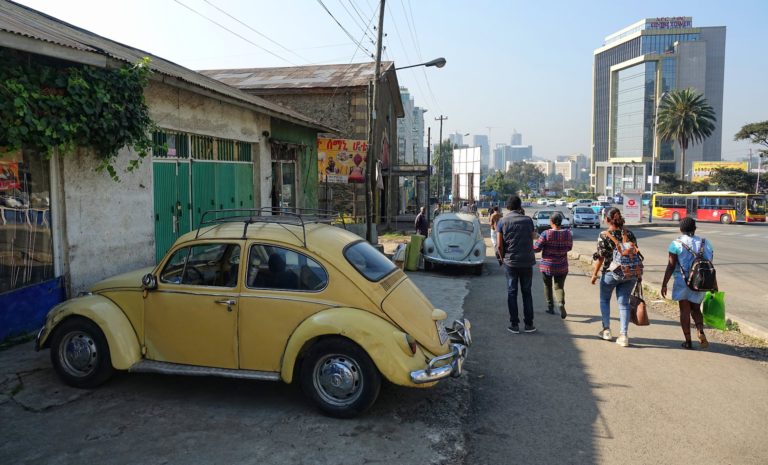
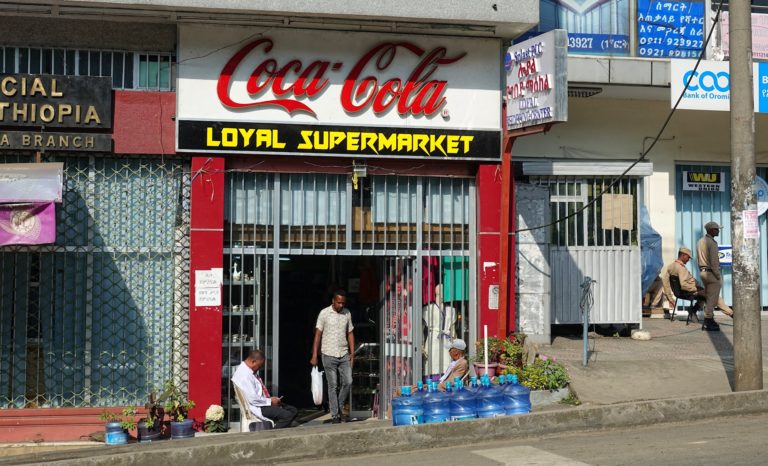
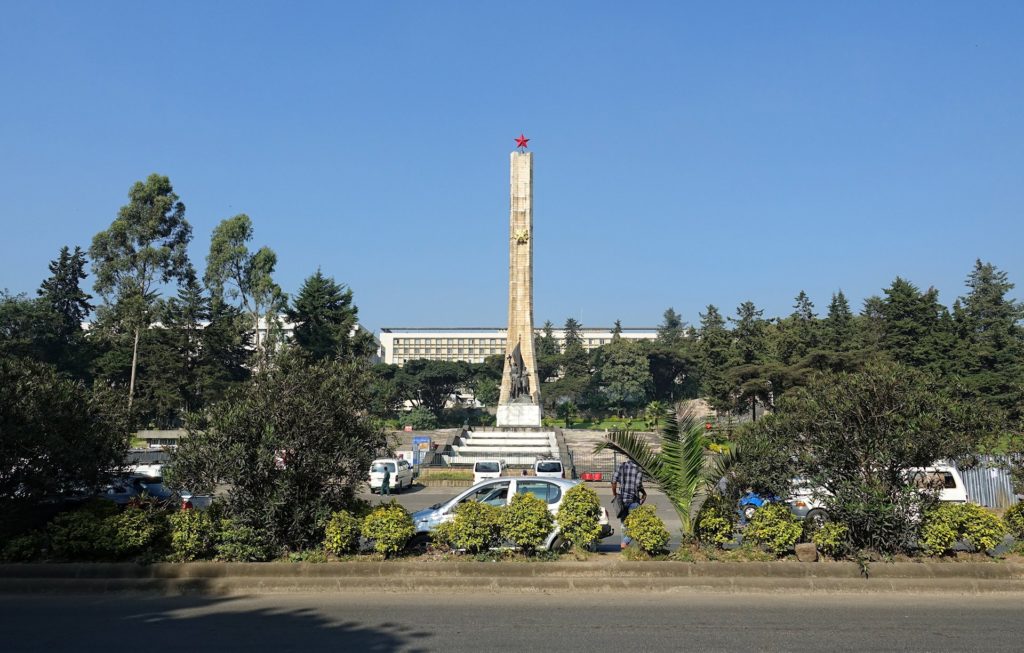



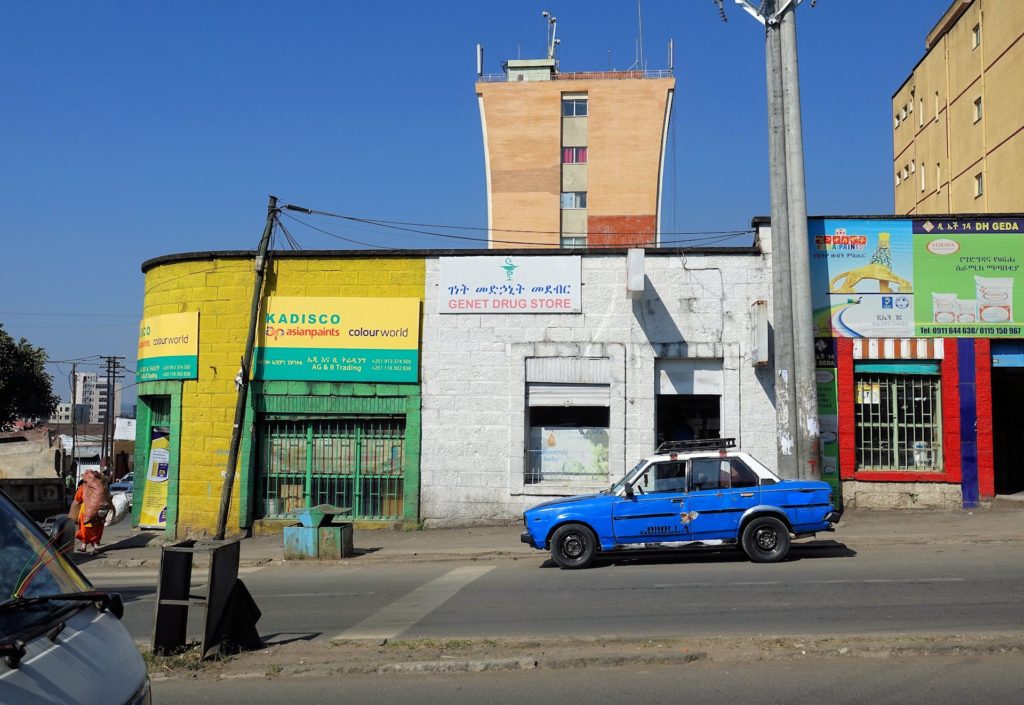
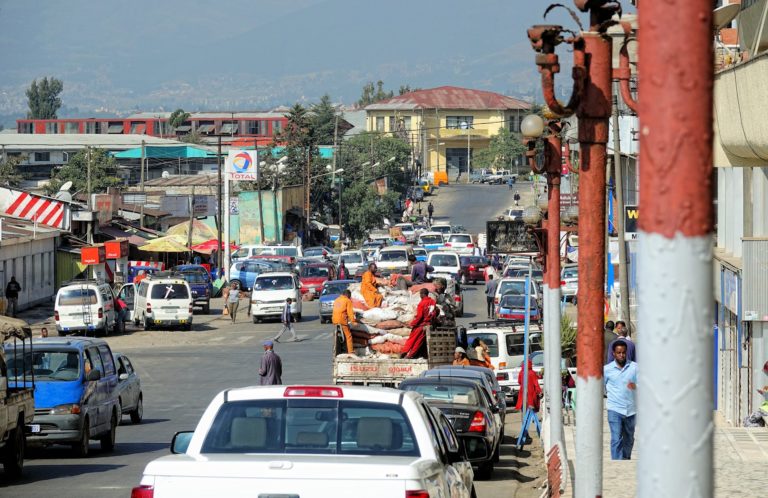
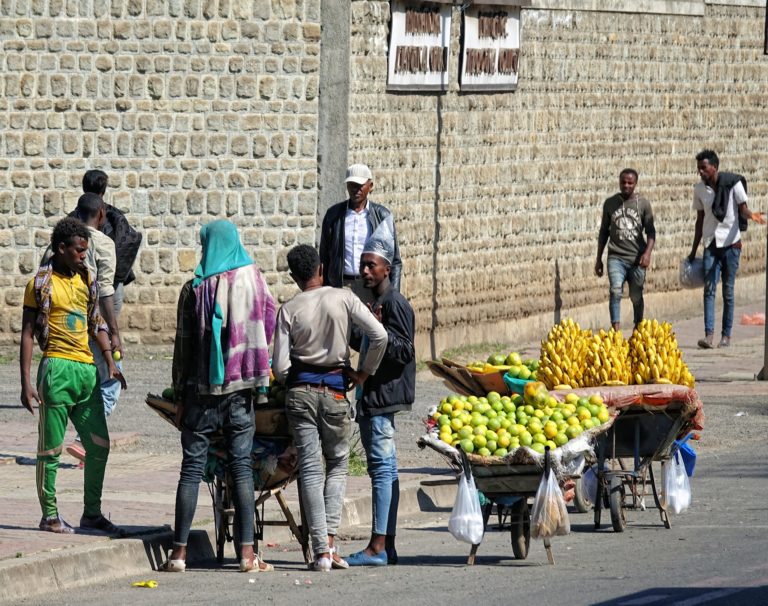
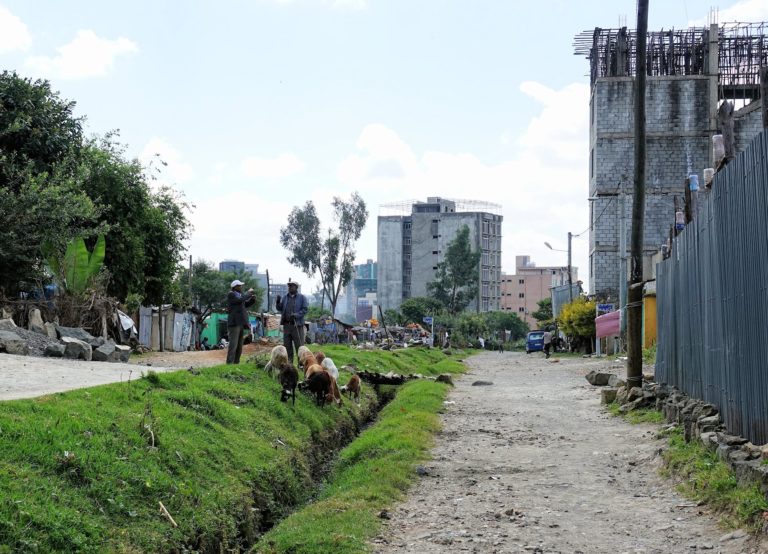





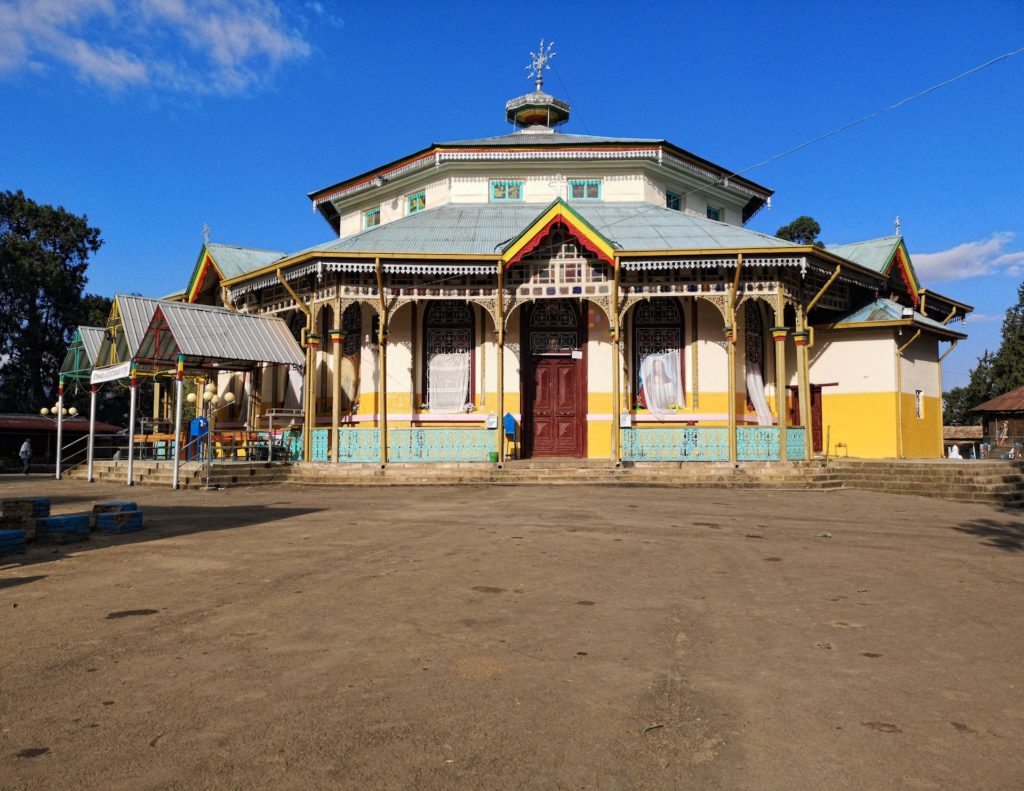

5 Comments. Leave new
Addis Abeba is not the most beautiful city, but better organised than other African capitals. For clothes, Ethiopian people are shorter than Europeans. But I found good handmade shoes, they are the best. Bermero Piazza, 25 euro for nice and good shoes. I visit Addis every year on my way to Kenya. If you visit Addis for a short time, the national museum is a must.
Hi
You describe well on one day visit, if you get from North, South or East West of the country you love it
Hi Abas,
Thank you for your comment. I am absolutely convinced I will love seeing all of Ethiopia, and I hope it soon again will become possible to do so. And after having seen the country, it will be easier for me to understand and appreciate more the ways of Addis Ababa as well. 🙂
Best of wishes for you and your people!
There are so many things wrong with what you have written about your one day visit. Starting from your initial statement, it’s not at all true that no one went to the country, on the contrary, it has been home to many foreigners and was and still is an important destination for genuine travelers. Ethiopian airlines has been around since 1945, it’s not an organization that suddenly came into existence in the last decade.
The history of the monument at the national theatre is not confusing and a quick look online should give you all the information you need in order to understand it properly. Visual appeal is not universal so if you didn’t like the monument , then say you didn’t like it personally and at least mention the name of the artist who designed it and the date of its completion. There is no need to just label a piece of art and one of the beloved symbols of the city as “not visually appealing”.
Ethiopia was never “ruled” by anyone, it was forcefully occupied by the fascist Italian regime from 1936 up to 1941, which was not a decade long event. The statue on horseback that you so carelessly implied to be “European style”…whatever that means, commemorates another important battle that took place decades earlier, in which the emperor and his army became the only nation to successfully fight off a modern European army on horseback, so I really don’t see where the irony is.
Your statement about the Ogaden war is also very misleading, you left out an important detail in that Somalia was the aggressor, they invaded a sovereign nation. Yes the consequences of the invasion were and still are unfortunate and war is no way an acceptable means to solve a disagreement between nations but comparing the physical state of the monument to the events that happened in Somalia is really not a respectful way of explaining how you feel about the event. After all it is commemorating the many soldiers that lost their lives in the war, you would have seen their pictures and their names and stories if you had taken the time to observe the situation with respect and tried to understand the the whole thing a bit more carefully.
Who made it a rule that in order to be modern one has to treat animals like factory products, I think animals are treated with a lot more respect here than in the “modern” cities that you are referring to, the people riding on top of cars are accompanying their animals and keeping them from falling off, the fact that u see them roaming around in the city should tell you that they are not brutally caged up in some animal farm somewhere far from the city.
Your articles goes on to make so many other assumptions about things and people, the problem is that you are confidently stating these things as facts without indicating that they are your assumptions, the one about the old man and his 30 year old clothing is particularly offensive, what do you know about that person? The life he has had? Why he was wearing whatever he was wearing on that day? , the answer is nothing, nothing but a lot of disrespectful assumptions. The same with the bananas on the street. I have eaten one of those bananas, I have also had many from the luxuriously stocked European super markets, and I can confirm that the street fruits are organic and way healthier than the over processed, frozen, wrapped fruits.
The issue with the skyscrapers: this is yet another issue you over generalized and made some random statements about, there are many other projects, tall and not so tall, public and private, yes the Chinese government owned construction companies are very active there and are involved in this project but this particular project you have published here had different origins, so again a quick look online is recommended before making such statements. Same with the apartments, yes there are power outages but there are also generators, and you are contradicting yourself here, you said the most expensive apartments are on the ground level so according to you, if a person is rich they should stay on the ground level, right? Yes.
I realize that this is a travel blog and these are your experiences but other people read them and form their initial assumptions off of them before going on a trip like yours, which is why I wrote this long comment. I personally I found your post offensive, overgeneralized and filled with wrong assumptions and most importantly with the lack of the expressions “in my opinion” or “personally”. Hope you take the time and revisit the things you were so quick to make judgements about.
Hi Michael,
Thank you for telling us how you feel, and adding pointers to where my post is inaccurate.
Before I respond to each of your points, I’d just like to say that the reason I don’t add “in my opinion” to each statement here, is that it should be pretty clear to anyone reading it that everything here is “in my opinion”, and I do not attempt to hide that my opinion was formed mainly during this one-day visit, and through some googling while writing it.
So here we go.
* I do not write that no one went to Ethiopia before, but that “no one” went to Ethiopia until relatively recently. Here is one source for that claim.
* The modernist Lion of Judah monument still confuses me. I know the Afrocentrism connection, but I find it difficult to follow the red line between Yohannes IV, Menelik and Haile Selassie. Some parts of history are to be admired, other parts not so much. And apart from the history behind it all, brutalism/modernism, especially when shown in concrete, is pretty ugly, whether it’s a lion in Ethiopia or an opera house in England. I have added a link to the Wikipedia page of the sculptor, like you suggested.
* It is easy to argue that every single colonization was a forceful occupation by a non-friendly foreign power. In Ethiopia’s case, depending on your definition of being a sovereign nation, the period can be said to have lasted roughly a decade, from 1935/1936 until the peace treaty of 1947. Even then, Britain continued to control parts of Ethiopia for another decade.
* I still find it strange/ironic that a proud African nation chose to use the historically most European equestrian statue style to commemorate a war successfully fought against exactly Europeans. It could be seen as an “in your face” thing, but I suspect it has more to do with how Selassie often mimicked European emperors, instead of following African tradition.
* Regarding the Ogaden war, I left out a LOT of details. I wouldn’t say that Somalia was the aggressor. This was part of the Cold War, a long series of war by proxy between Communism and “the West”. I think any war is stupid, so I see no need to glorify any war memorial. I have added a link to the Wikipedia article, though. The main thing about this, to me, was the strangeness of seeing a North Korean monument in this part of Africa.
* Regarding your comment about animals, I’m not sure, but I’m guessing it’s about the man herding goats in the city, and my observation of seeing visibly distressed animals on top of cars. I’m not judging anyone. I’m just saying it’s something you don’t see very often where I live.
* Regarding people wearing whatever: Again, I’m not sure what your criticism is about. I just know that I’m in a poor country, and I admire the way people care for their clothes so that they can be worn presentably for a long time. And I think that most of the time, they look every bit as good as people you see on the streets of Europe. I take pride in wearing my own clothes for several decades as much as I can. Way too few people do that, and instead insist that a jacket or trousers must be changed just because they’re a few years old.
* I agree, street fruit is perfectly fine. I just found it a little amusing that the man selling them was wearing a plastic bag on his head. I did not ask him why he did it. You’re right, I’m just assuming that it’s something he thinks makes him stand out on the street, to improve his sales numbers. Nothing wrong with that, if so.
* Skyscrapers: The way Chinese companies are running a modern sort of colonialism scam wrapped in a pretending-to-aid cloak is generally not a good thing for Africa or the world. I’m not sure what you’re alluding to, but in front of the building there’s an ad-like poster for a Chinese state-owned construction company, showing other projects they’ve done; Shenzhen Ping’an Financial Center, Wuhan Greenland Center Tower and Tianjin Golden 117. At least two of them were/are failures, so I’m not surprised if this will turn out to be one as well. Anyway, here‘s one source for the claim that lower-level floors are more attractive in Addis Ababa.
I’ll no doubt return to Ethiopia in the future, and I’ll stay many more days than during my first visit. I’ll do my best to treat the country with fairness then, just like I don’t think I were too unfair the first time either.
Happy trails to you, Michael!